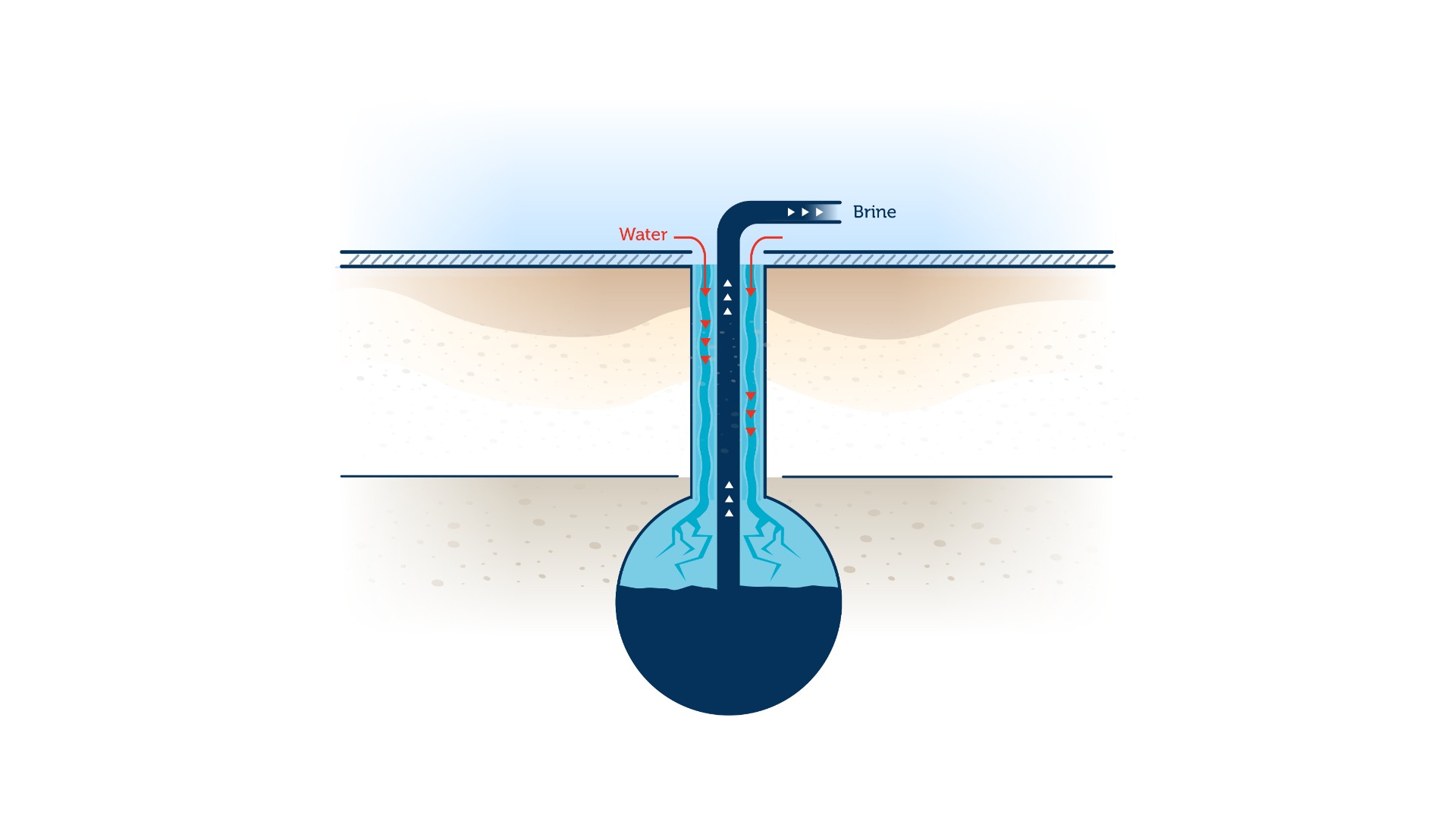
All salt comes from the sea...
Salt is a natural product, one that’s had a variety of uses for thousands of years. Nowadays, we use it in food but that only accounts for 6% of total salt use. We use it to protect our infrastructure, and widely in manufacturing across multiple industries. Planet Earth is rich in salt – both our oceans and land are abundant in it, but how do we get our hands on it and where does it come from?
Mining underground salt deposits
Salt deposits can be found deep, deep underground. These deposits formed as ancient seas evaporated and were eventually covered in land by tectonic changes over millions of years. Around Europe, these deposits all come from one dried up sea, called the Zechstein.
To access these salt deposits, producers drill down, and extract the salt from the layers of rock in the salt deposit. There are a number of ways to extract the salt from these layers of rock…
Room and Pillar Mining

Room and Pillar Mining is where underground rooms are formed by the extraction of salt. The first way to extract Salt is through the ‘cut and blast’ method. This uses explosives, placed into small holes drilled in the rock formation which then blast chunks of rock out from the mine wall. The second way to extract salt is through continuous mining, where a machine gouges out the walls of the mine. Both processes produce lumps of rock, and these are repeatedly crushed to release rock salt.
Solution Mining

Solution Mining is where producers pump water into the salt deposits, creating a liquid salt brine. This liquid is then pumped up to the surface and evaporated in vacuum chambers. This process is industrial and energy-intense but produces the purest end product.
Overground production
Above ground, there are two places in nature where we can extract salt. The first, and most common, is the sea, and the second are salt springs, which pop up in various places across the globe.
Solar Salt Production

The method of extracting salt from either of these bodies of water dates back thousands of years. Solar Salt Production uses the sun to evaporate water, leaving behind salt crystals.
To start off the process, seawater is pumped into shallow pools, traditionally known as salt flats. When using sea water these salt flats are obviously beside the sea but on land, the flats will be dictated by the water source. The treatment of the water and method of extraction, for both, however, remains reasonably unchanged.
As the seawater moves through the various ‘ponds’ the liquid content is evaporated over time, by the sun and the wind. By the time it reaches the final pond, salt crystals form, and sink to the bottom, and this is then harvested. After harvest, the crystals might be treated or processed in line with the intended use of the end product. Solar evaporated salt accounts for 10% of salt produced in Europe.
